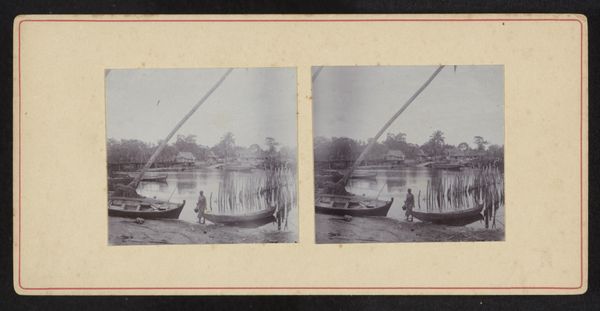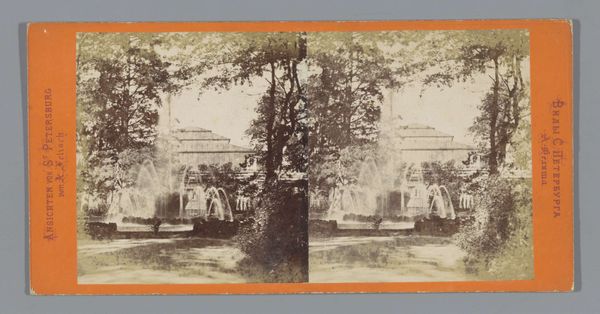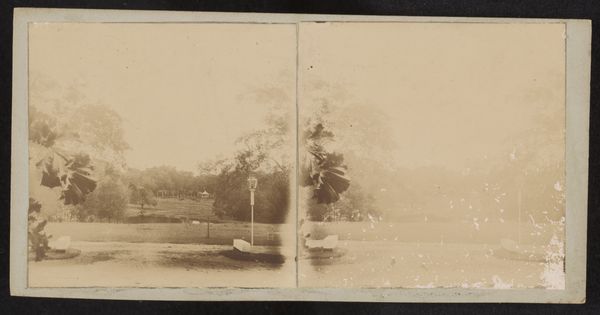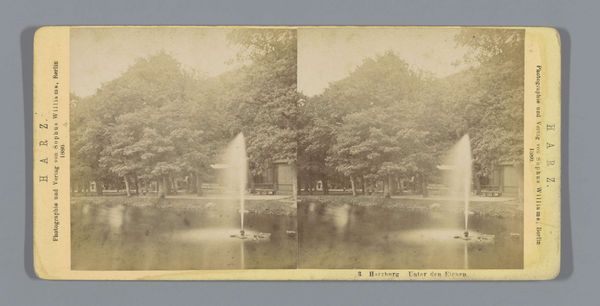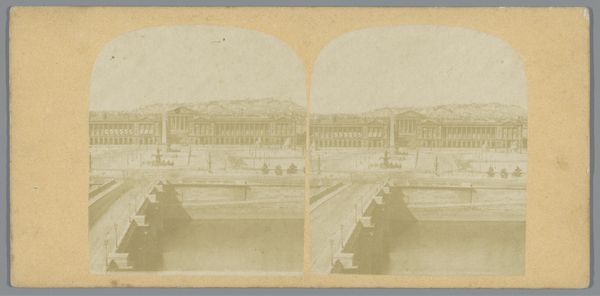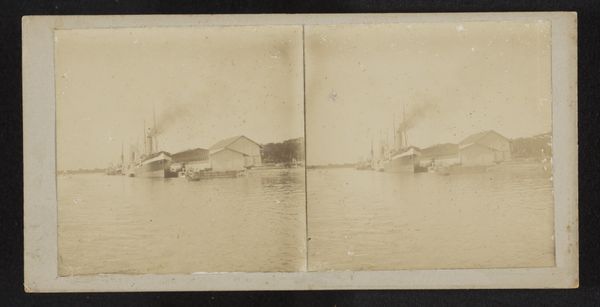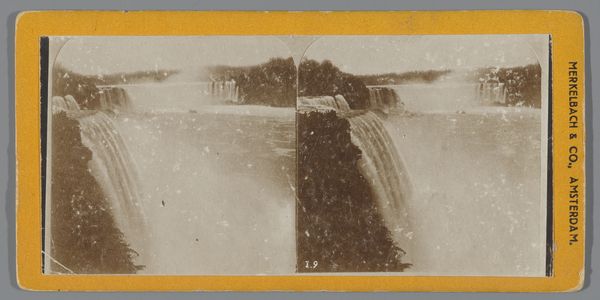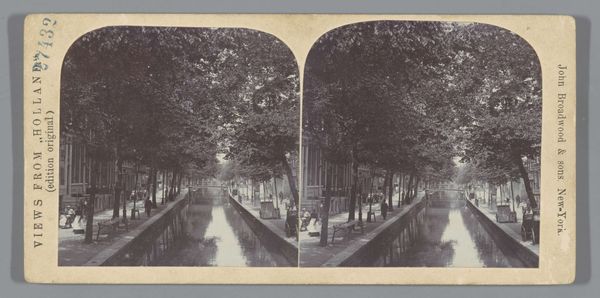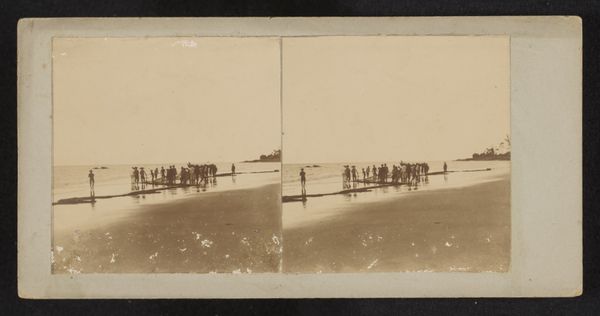
photography
#
landscape
#
photography
Dimensions: height 82 mm, width 168 mm
Copyright: Rijks Museum: Open Domain
Curator: This stereoscopic photograph, titled "De Neptunusvijver in de tuinen van Versailles", presents a view of the Neptune Fountain, taken around 1858. Editor: My first thought is how striking the repetitive verticality is – the unwavering lines of the water jets, softened by the early photographic process. It's almost eerie, as if captured in a dream. Curator: Indeed. Stereoscopy itself is fascinating. These paired images, when viewed together, created an illusion of depth, simulating three-dimensionality, that must have amazed 19th-century audiences. It offered a mass-producible, tangible slice of Versailles. What were people purchasing and what stories were they internalizing when they brought these images home? Editor: It makes you wonder about the cultural fascination with Versailles, even then. Neptune, as a powerful sea god, usually represents control over chaos. I wonder, then, is this photo communicating mankind's supposed control over nature? Perhaps reinforcing social hierarchies too; power displayed through constructed environments, immortalized through imagery? Curator: Precisely! The material consumption of images like this reveals social aspirations. This early form of photography democratized the palace grounds to the middle class. How were viewers' own place within a complex web of economic and political power confirmed when engaging with works like this? The photo-chemical development processes, printing, distribution, all represent very real industry at this time. Editor: Interesting points. And even looking beyond Versailles, there's Neptune himself – the deity represents so much more than simple maritime authority, he represents wealth and dominance as well. Capturing Neptune’s fountain became a method of re-enacting the story of that status. Curator: So true. These early photographs act as interesting historical markers. They can give us glimpses of both artistry and production techniques used in the era and insight to a set of ideals and attitudes towards the social order. Editor: Ultimately, it is more than just water in a pond. This offers us, even today, a small look into how symbols were consumed by our predecessors, telling silent stories from another era.
Comments
No comments
Be the first to comment and join the conversation on the ultimate creative platform.
